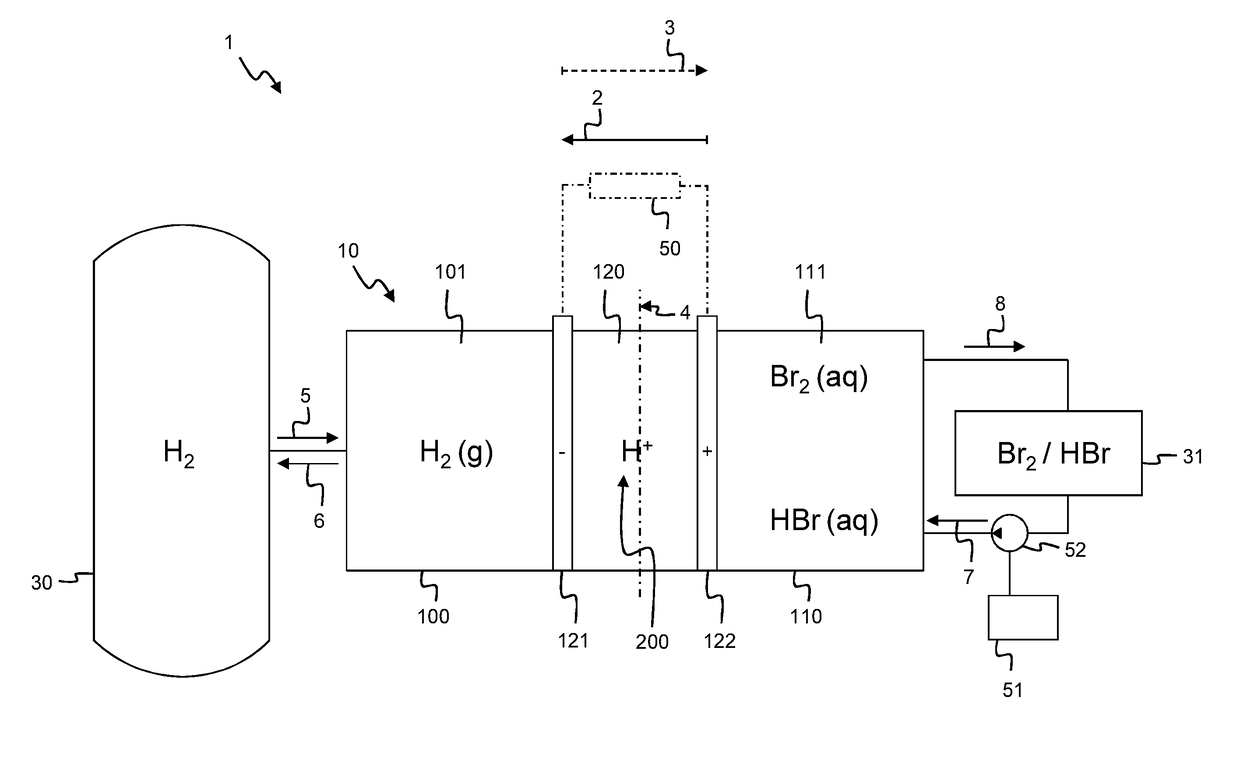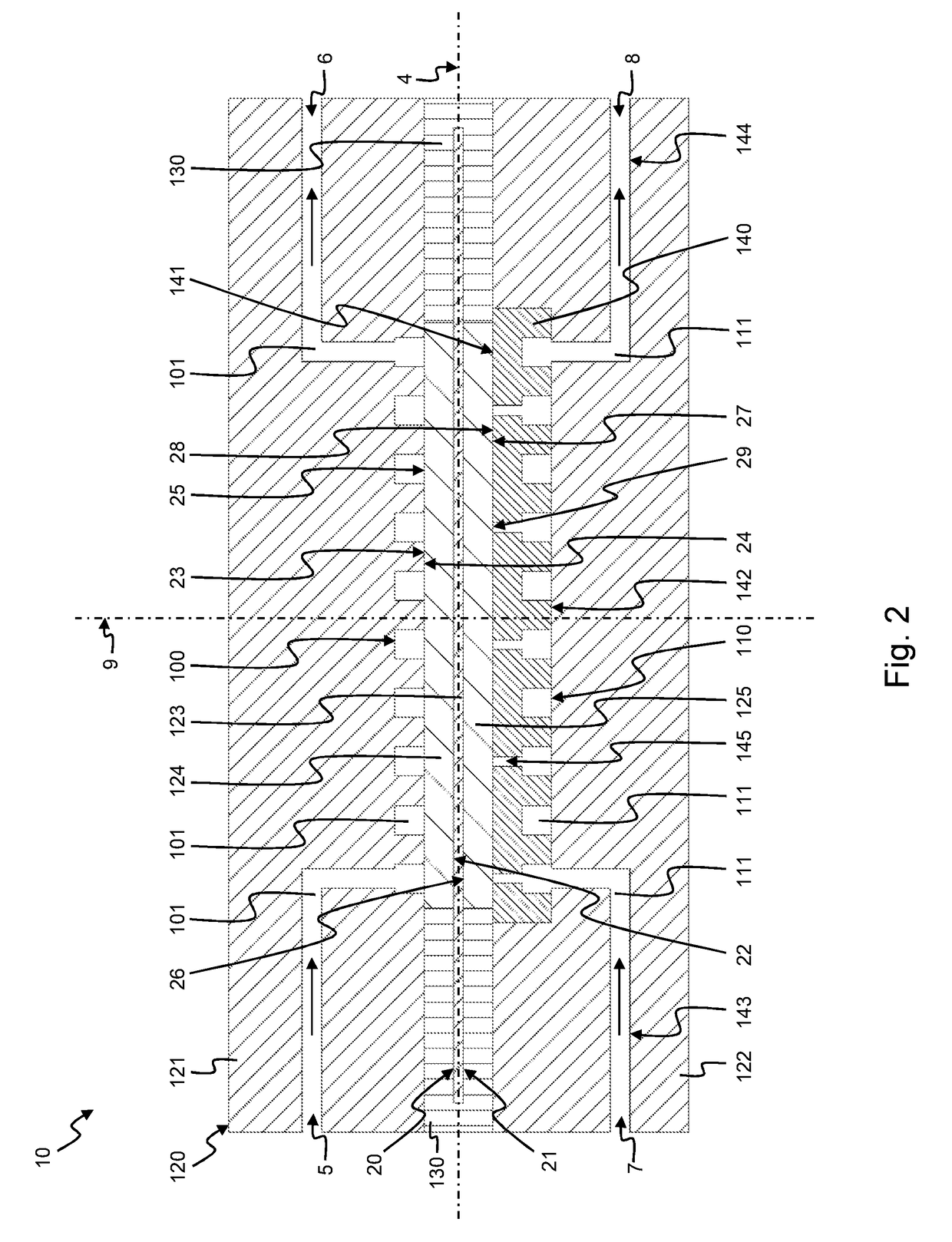A hydrogen-redox flow battery assembly
a flow battery and battery cell technology, applied in the direction of electrochemical generators, fuel cells, electrical equipment, etc., can solve the problems of increasing the cost associated with the system, high purchase and maintenance costs, and challenging energy-efficient devices of hydrogen compressors, so as to improve the efficiency of the battery cell, increase the reliability, and simplify the construction of the flow battery cell.
- Summary
- Abstract
- Description
- Claims
- Application Information
AI Technical Summary
Benefits of technology
Problems solved by technology
Method used
Image
Examples
Embodiment Construction
)
[0081]According to an embodiment shown in FIG. 1, a flow battery assembly 1 comprises a battery cell 10 comprising a hydrogen chamber 100, an electrolyte chamber 110. In between the hydrogen chamber 100 and the electrolyte chamber 110 there is positioned a membrane 123 of a membrane electrode assembly 120 which further comprises a hydrogen electrode 121 and an electrolyte electrode 122. In an alternative embodiment, the flow battery assembly 1 comprises a plurality of battery cells 10 similar to the battery cell 10 depicted in FIG. 1, as will be explained in further detail below with reference to the embodiment of FIG. 5. As shown, the planar membrane 123 comprises a central plane 4. The hydrogen electrode 121 is positioned on one side of the central plane 4 and the electrolyte electrode 122 is positioned on the opposite side of the central plane 4. As shown the hydrogen electrode 121 is positioned at the same side of the central plane 4 as the hydrogen chamber 100; while the elect...
PUM
| Property | Measurement | Unit |
|---|---|---|
| pressure | aaaaa | aaaaa |
| pressure | aaaaa | aaaaa |
| pressure | aaaaa | aaaaa |
Abstract
Description
Claims
Application Information
 Login to View More
Login to View More - R&D
- Intellectual Property
- Life Sciences
- Materials
- Tech Scout
- Unparalleled Data Quality
- Higher Quality Content
- 60% Fewer Hallucinations
Browse by: Latest US Patents, China's latest patents, Technical Efficacy Thesaurus, Application Domain, Technology Topic, Popular Technical Reports.
© 2025 PatSnap. All rights reserved.Legal|Privacy policy|Modern Slavery Act Transparency Statement|Sitemap|About US| Contact US: help@patsnap.com



